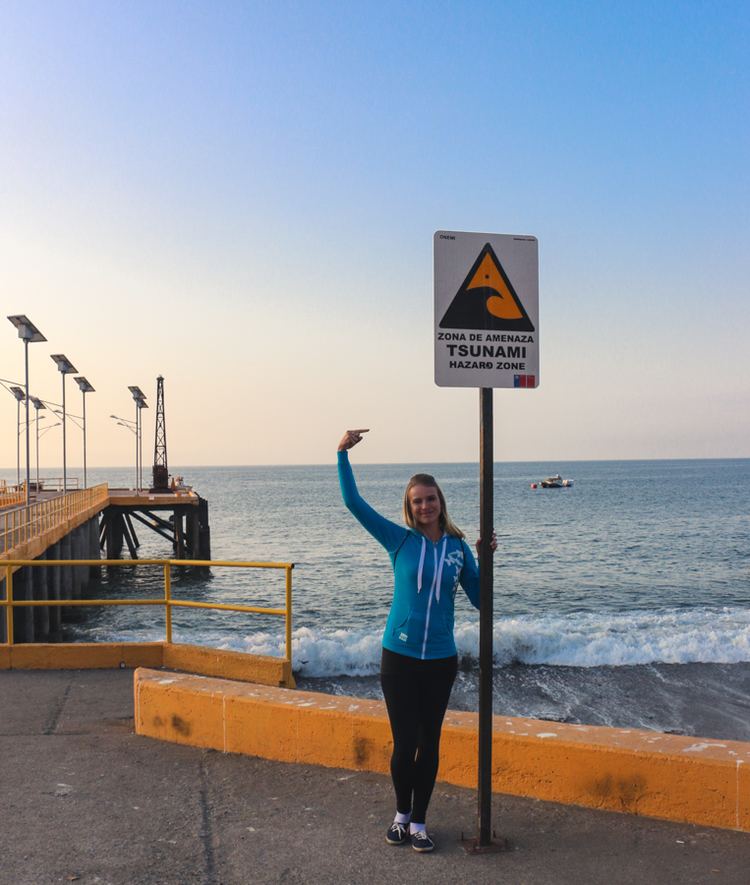Country Chile Time zone CLT (UTC−4) Elevation 2,098 m Local time Saturday 11:10 PM | Established 12 July 1858 Area code(s) 56 + 55 Area 20,405 km² | |
 | ||
Weather 16°C, Wind S at 10 km/h, 47% Humidity | ||
Taltal is a Chilean commune and city in Antofagasta Province, Antofagasta Region. According to the 2012 census, the commune has a population of 11,132 and has an area of 20,405.1 km2 (7,878 sq mi). The commune is home to Paranal Observatory and includes the northern portion of Pan de Azúcar National Park.
Contents
- Map of Taltal Antofagasta Region Chile
- Etymology
- History
- Demographics
- Administration
- Tourism
- Architectural heritage
- Taltal wind farm
- References
Map of Taltal, Antofagasta Region, Chile
Etymology
The etymological origin of the name is the Mapudungun word Thalthal, which means “night bird.”
History
The history of Taltal begins with the opening of the copper mine "El Cobre" by José Antonio Moreno in 1850 about 20 kilometers north of Taltal. This brought miners and prospectors to the area. In 1855 Moreno expanded his operations to include Taltal. The discovery of copper in 1858 on nearby Mount Cachiyuyal increased pressure on the port, which had to utilize customs officials from Copiapo. So Moreno requested official recognition of the port which was granted by decree on 12 July 1858.
However, the real boom began in 1876 with the opening of nitrate mines, in particular potassium nitrate. In 1879, the first nitrates were shipped from the area. In 1882 a railway was completed from Cachinal de la Sierra and other nitrate mining sites. It was built by the "Taltal Railway Company", a British company, sold to private investors in 1954, and dismantled in 1970 due to the end of nitrate mining. At the peak of production in the 1930s, Taltal had a population of over 30,000 and was the third largest nitrate port in Chile.
Demographics
According to the 2002 census of the National Statistics Institute, Taltal had 11,000 inhabitants (6,182 men and 4,918 women). Of these, 9,564 (86%) lived in urban areas and 1,536 (14%) in rural areas. The population grew by 2.3% (11,148 persons) between the 1992 and 2002 censuses.
Administration
As a commune, Taltal is a third-level administrative division of Chile administered by a municipal council, headed by an alcalde who is directly elected every four years. The 2008-2012 alcalde is Guillermo Hidalgo Ocampo.
Within the electoral divisions of Chile, Taltal is represented in the Chamber of Deputies by Mr. Pedro Araya (PRI) and Mr. Manuel Rojas (UDI) as part of the 4th electoral district, (together with Antofagasta, Mejillones and Sierra Gorda). The commune is represented in the Senate by Carlos Cantero Ojeda (Ind.) and José Antonio Gómez Urrutia (PRSD) as part of the 2nd senatorial constituency (Antofagasta Region).
Tourism
Architectural heritage
The city of Taltal contains many houses that are registered in the Inventory of Cultural Heritage Properties in Chile. Highlights include the Alhambra Theatre (1921), the Augusto Capdeville Museum (1885), the railroad houses (1886), the Plaza Hotel (1898), houses in the downtown area, the (which was completely devastated by a fire in January 2007 but is now rebuilt) and the Protestant church (1896).
Taltal wind farm
The company Enel Green Power has begun the construction of the new Taltal Wind Farm, which will be located in the commune of Taltal, Chile, approximately 1,500 kilometers north of Santiago, the Chilean capital. The project will require a total investment of $190 million US dollars and will produce a total of 99 megawatts (MW). It will have 33 windmills, making it the biggest wind farm in Chile.
